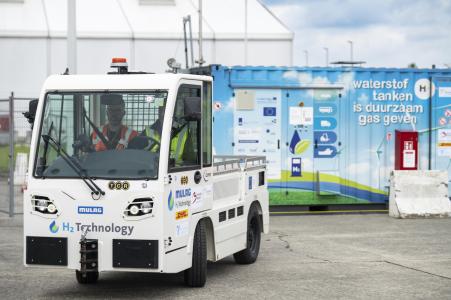WaterstofNet and VIL realize demo with hydrogen-powered ground support equipment at Brussels Airport
In the framework of the Stargate project led by Brussels Airport Company (BAC), WaterstofNet in assignment of VIL, organizes a demo with a hydrogen-powered ‘ground support equipment’ (GSE) at Brussels-Zaventem Airport in May and June. The test is needed in order to gain more insights in the pros and cons onsite, which could enable the greening of the ground support- and handling equipment. The demo also means a first at BAC: the introduction of hydrogen at the airport through the use of a (mobile) hydrogen refuelling station (HRS).
Within the Stargate project 21 consortium partners collaborate on the development of innovative solutions for green airports and aviation. VIL, one of the project partners, subcontracted WaterstofNet for an ‘airside’ demonstration. In the projects Hydrogen Region 2.0 and H2RenT, WaterstofNet operates and uses a mobile HRS, which is also commissioned in this project. For Stargate, WaterstofNet executed a feasibility study, an ROI-tool and the proof of concept for the use of hydrogen at an airport (which involves the 6-week-long demonstration). WaterstofNet applied for the permit, which has been granted and Air Liquide will deliver the hydrogen to the mobile HRS.
Mulag
DHL will test the GSE; a Mulag Comet ‘bagage tractor’, retrofitted with a fuel cell by Globe Fuel Cell Systems. The result is a powerful, all-round towing tractor, which the logistics company will use to move cargo from their depot to the airplanes’ apron. Their night crew team was trained to operate the GSE and refuel it airside with hydrogen. “The fueling and operations are conducted by trained and certified operators, as the project includes comprehensive training for users, logistics managers, mechanics, fire brigade, and health and safety personnel,” explains BAC in the press release (see below). The data monitoring of the demo will be used for the ROI-tool that WaterstofNet will deliver after the summer.
Decarbonization of aviation and airports
The GSE was previously demonstrated at Toulouse Airport in the Stargate project. There is a lot of interest for hydrogen in aviation. At Schiphol Airport for example, a hydrogen ground power unit (GPU) is developed and demonstrated for GSE under the ‘Tulips’ project.
“Furthermore, the alternative fuels infrastructure regulation (AFIR) of the European Commission to reduce greenhouse gas emissions by at least 55% by 2030, also provides in zero-emission power generators for aircrafts. It is expected that hydrogen will play a major role in the decarbonization of aviation and airports,” adds project manager, Stefan Neis.
Sustainability policy
For Brussels Airport the Stargate demo with a GSE on hydrogen fits in well with the sustainability policy and to test whether the new technology - alongside battery electric GSE - could be implemented for internal airside vehicles at the airport. Past investments (wind turbines, PV panels and a biomass power plant) make that the airport could produce its own green hydrogen through electrolysis. Hence hydrogen applications can be seriously considered.
“The goal of this pilot is to evaluate the potential of hydrogen as an alternative fuel for ground handling equipment, next to electric ground handling equipment, and to gain insight into the necessary procedures to use this fuel at an airport. This test will serve as a model for other partner airports within the Stargate project, offering valuable insights into permit application processes, safety requirements, and operational experiences for all airport partners,” concludes BAC.
Read the press release.
More information: Stefan.Neis@WaterstofNet.eu
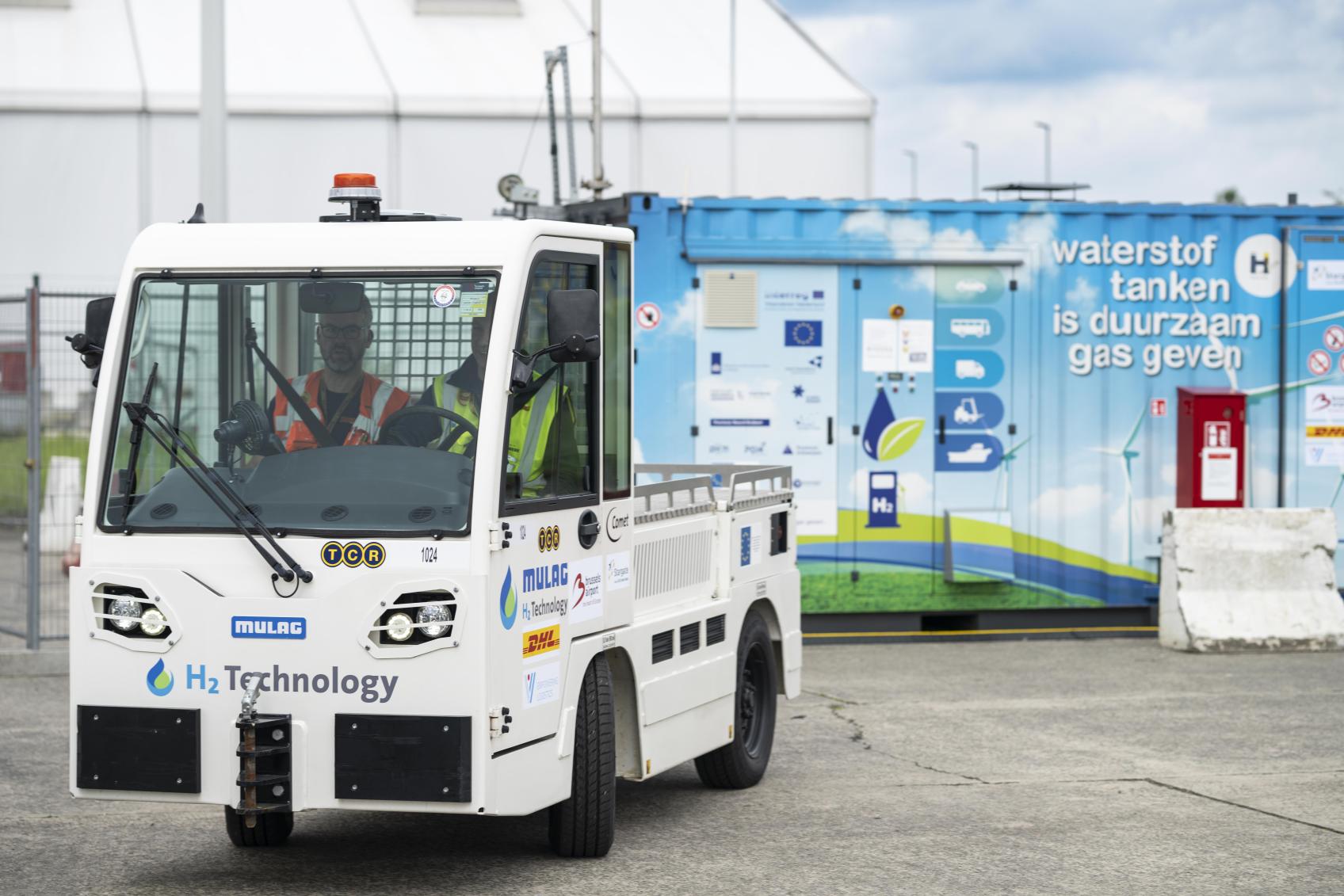
© Brussels Airport Company/Stargate
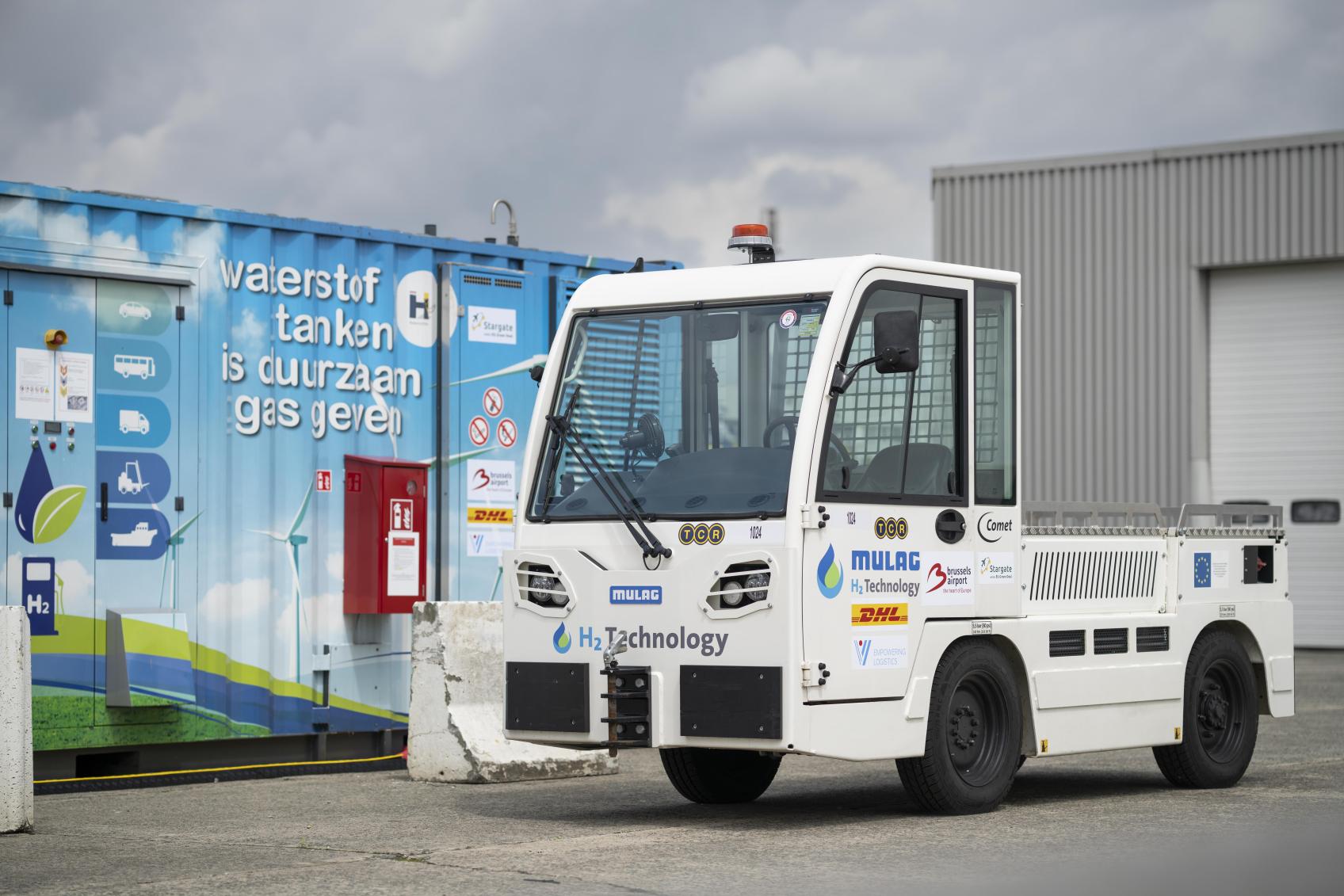
© Brussels Airport Company/Stargate
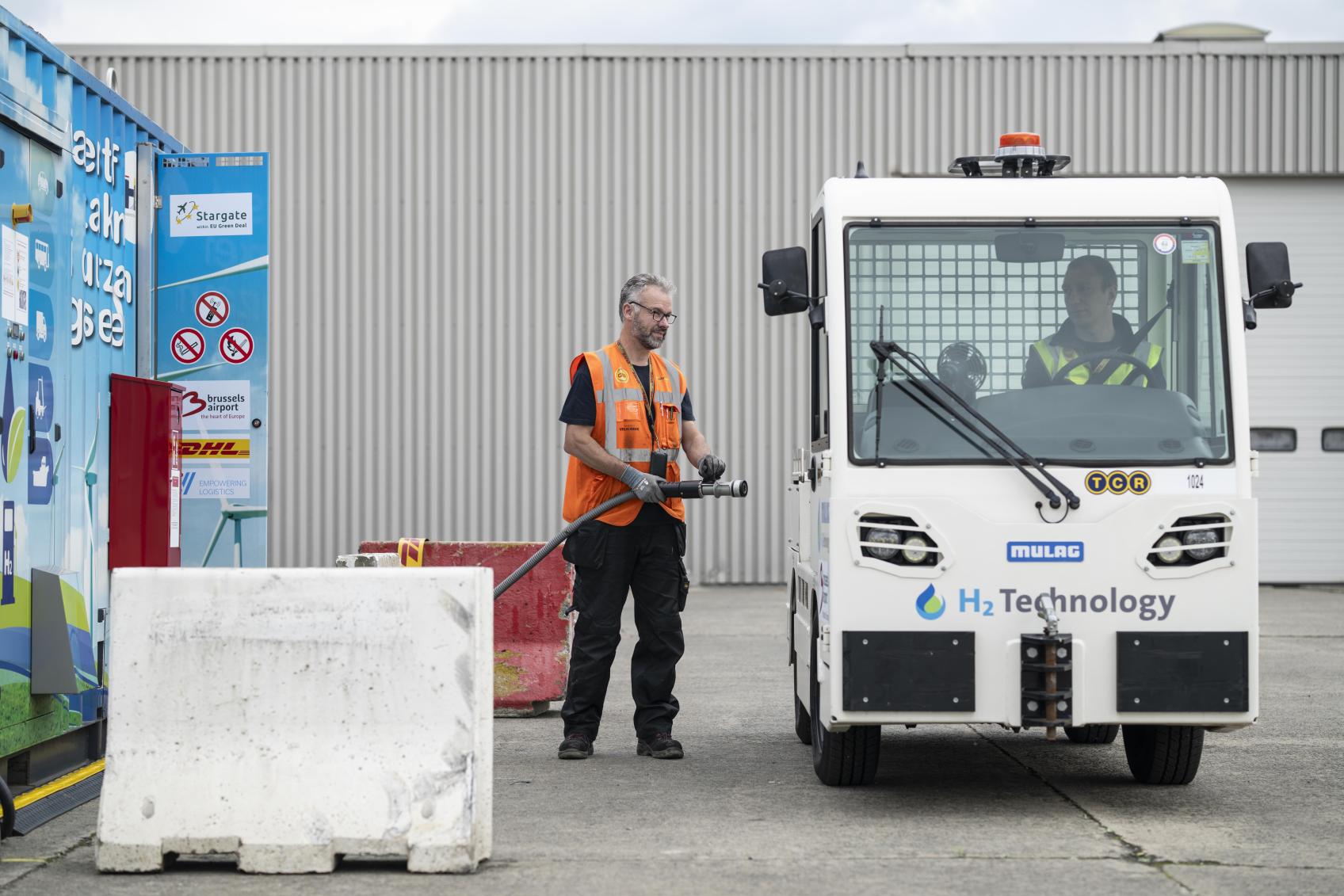
© Brussels Airport Company/Stargate
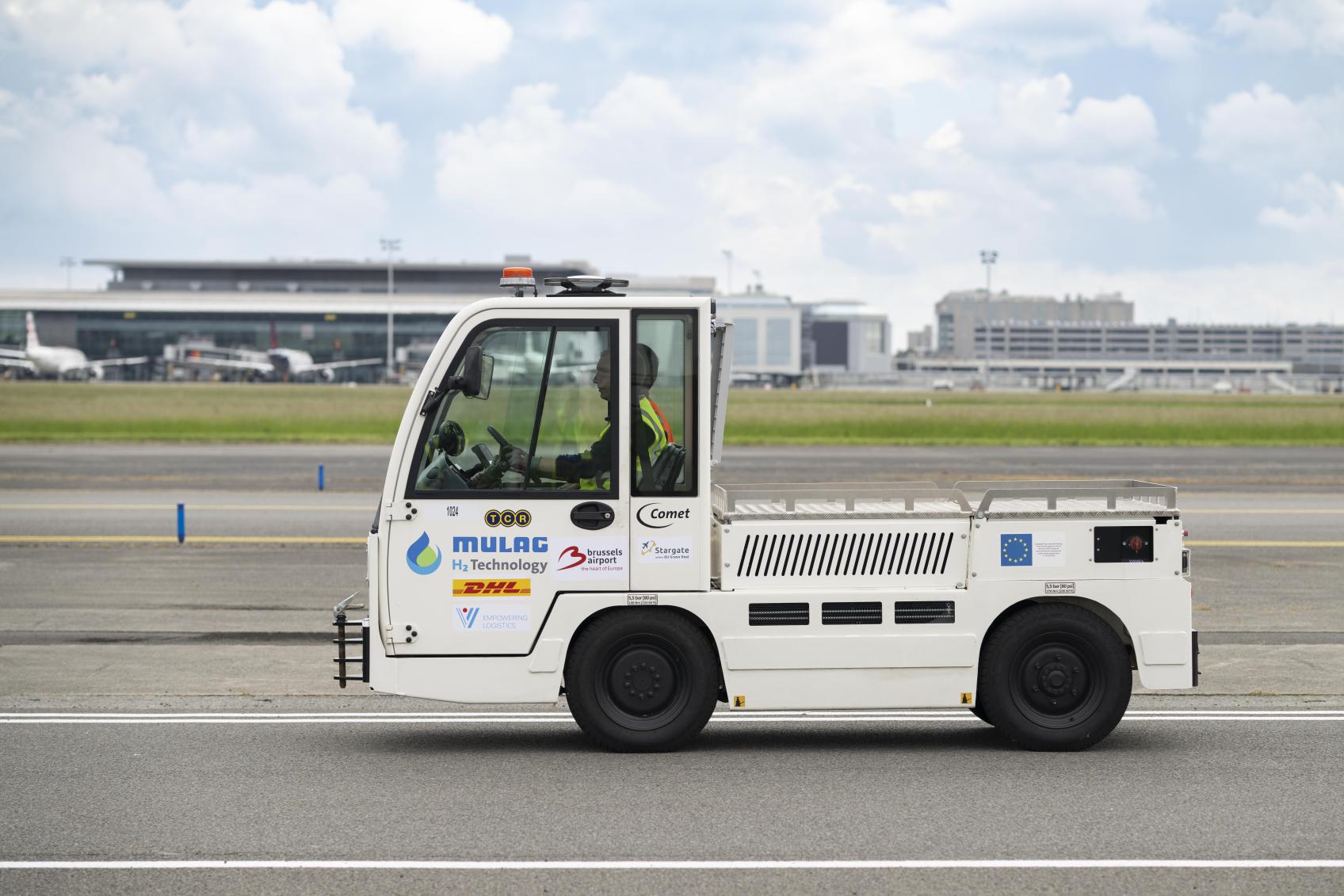
© Brussels Airport Company/Stargate

